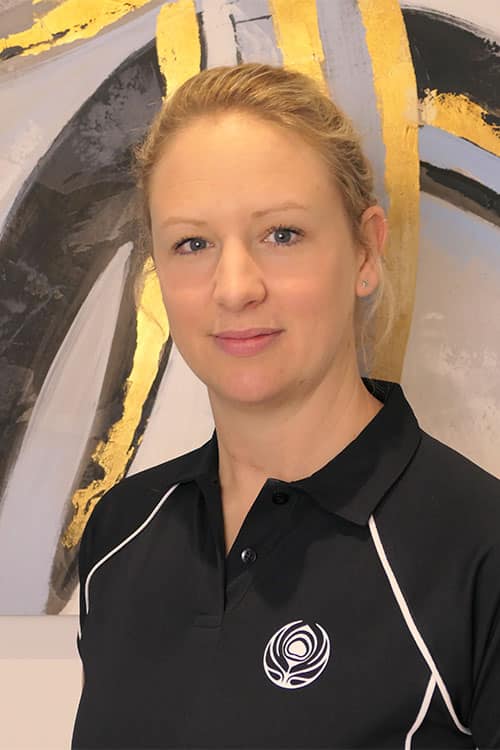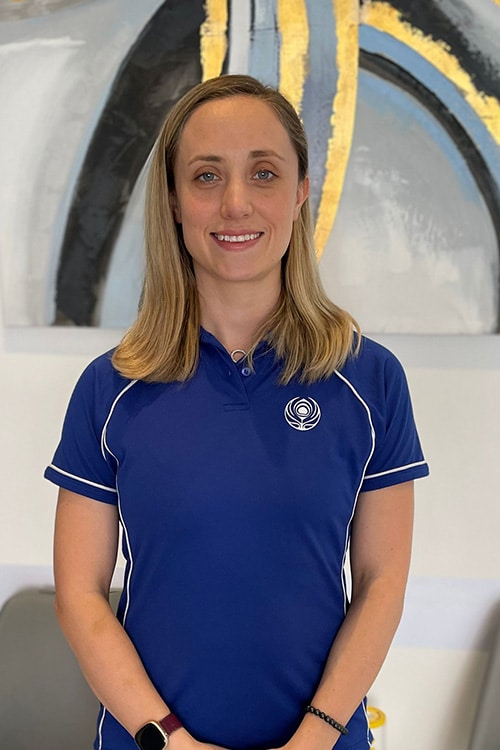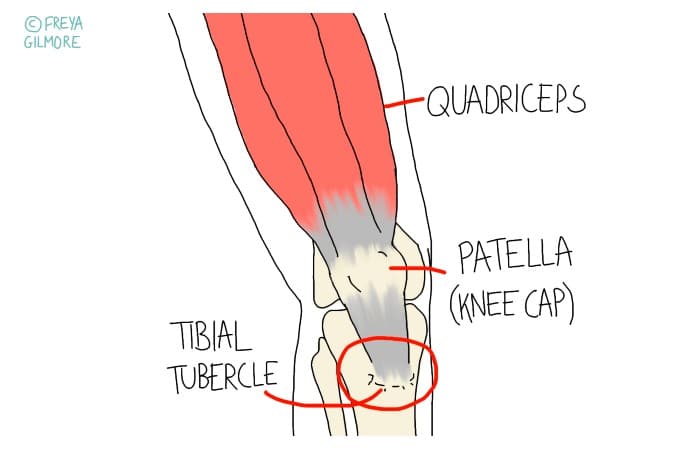Osgood Schlatter Disease (OSD) is a condition of the knee that affects adolescents. It usually presents earlier in girls than boys, starting somewhere between the ages of 9 and 14. The condition is considered common, affecting around 10% of adolescents, and around 20% of those who participate in running or jumping sports.
Symptoms of Osgood Schlatter Disease
The condition typically starts with pain at the base of the knee, where the tendon meets the shin bone. Touching the area is often tender, and may be slightly soft too. Exercise that involves the strong thigh muscles can cause pain immediately, which may linger for a while after stopping. Patients might find that exercise-related symptoms are reduced if the muscles are properly stretched and warmed up beforehand.
Kneeling may also cause pain, for which knee pads may be helpful in redistributing the pressure.
Mechanism and Risk Factors
Osgood Schlatter Disease begins in adolescence while the growth plate at the top of the shin is still soft. Children who are active, particularly with running or jumping sports, are more likely to stress the growth plate and develop OSD. This is because the tendon that pulls on the soft bone of the shin, blends into the strong quadriceps muscles. Running and jumping ask the quadriceps to engage more than other activities.
We often see academy football players presenting with OSD. They and their parents may be particularly concerned as any physical ailment may hamper their potential football career. Please note that all details of your appointments are strictly confidential and will not be passed on to
It is possible that the condition develops alongside a growth spurt, the theory here being that if the thigh bone grows faster than the thigh muscles, there will inevitably be increased tension on the knee.
Managing Osgood Schlatter Disease
The good news is that this condition will eventually resolve on its own as the bones mature. There is often a painless lump at the base of the knee that remains permanently as it turns to bone, even with intervention. About 10% of adults do continue to feel pain, especially on kneeling or activity. We may be able to help with chronic pain resulting from Osgood Schlatter Disease. For most cases, symptoms last between a few months and two years.
While the condition is active, there are a few things that can help to manage the symptoms. Your osteopath can help to provide and develop exercises to keep the quadriceps muscles as relaxed as possible. The aim of this is to reduce the pull on the knee in the first place. This can be a particularly good strategy for adolescents who do not want to reduce or modify their sport. We can also provide treatment directly to the muscles to help calm them down. Local treatment to the knee to improve its general function and reduce inflammation can be beneficial for healing and pain relief. We may also give advice around the use of a cool compress, which will be tailored to your case.
Click here to make an appointment for your child’s knee pain in Horley or Crawley



















